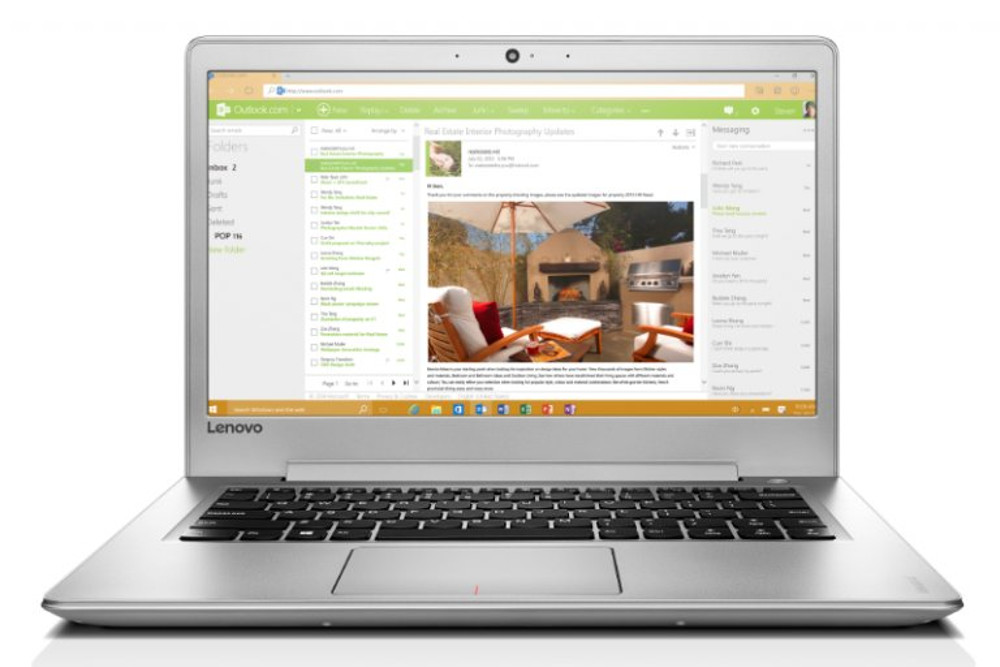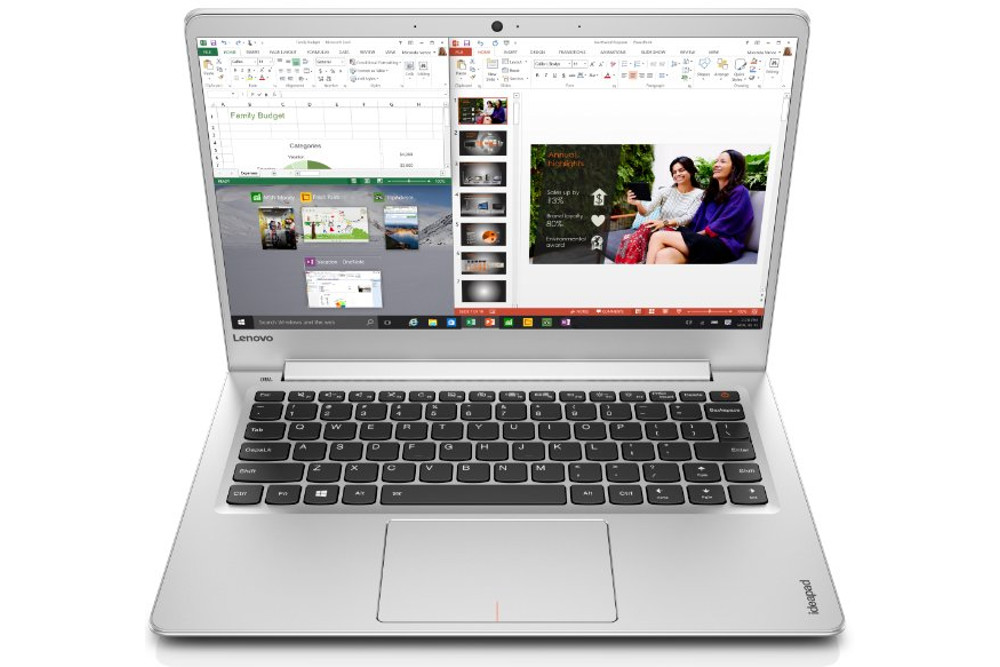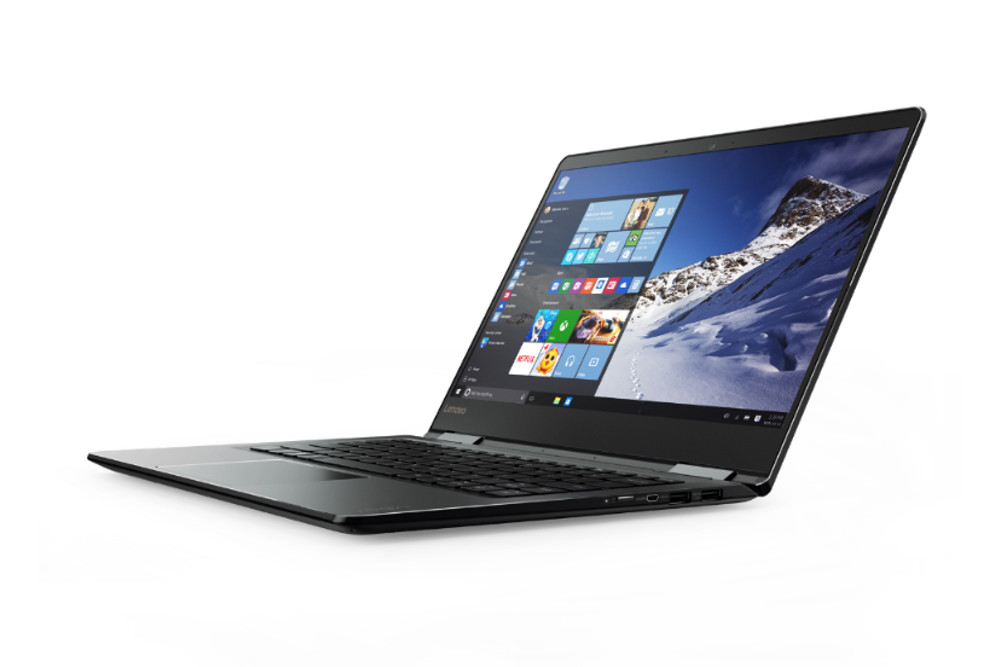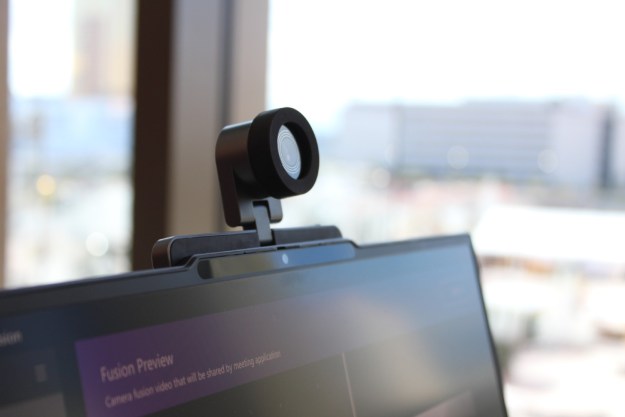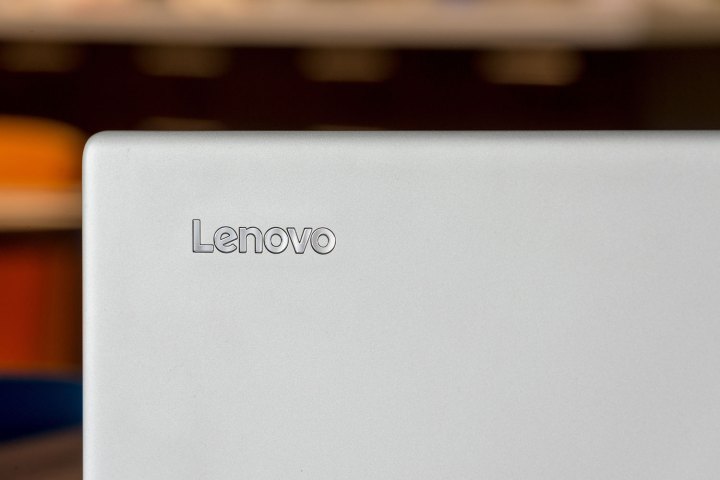
The collection is headlined by a quartet of new IdeaPad systems, with the entry-level 310 being the most effective at a price point of 28,390 rupees (equal to about $430). The laptop features an Intel seventh-generation Core processor, as well as a 15.6-inch FHD display and Dolby stereo speakers, making it perfect for surfing the web and streaming entertainment.
Meanwhile, the IdeaPad 510 caters to audiences that need a tad more horsepower, with sufficient specs to power video editing software and console-quality games at a price of 61,690 rupees (about $930). An Intel Core i7-7500U processor is paired with 8GB of DDR4 RAM and an Nvidia GeForce 940MX graphics card to provide enough muscle to get the job done.
Lenovo is also fielding two high-spec, highly portable laptops aimed at professional users, according to a report from WinBeta. The IdeaPad 510S weighs less than 2 kg, but packs 8GB of DDR4 RAM, a 1TB HDD, 2GB of integrated AMD graphics, and a FHD 14-inch display with a 1,920 x 1,080 pixel resolution. The 510S also features an Intel Core i5 7200U processor, two USB 3.0 ports, and one USB 2.0 port with always-on charging capabilities, and retails for 51,090 rupees (about $770).
At 73,390 rupees (about $1,100), the IdeaPad 710S is the most expensive system of the bunch — but its luxurious design sensibilities and its formidable specifications should make sense of the price tag. Every effort has been made for the 710S to provide standout performance while retaining its highly portable form factor, as evidenced by the super-thin bezel that surrounds its 13.3-inch, 3,200 x 1,800p resolution QHD display.
The 710S is 13.9mm thick and weighs less than 2.5 pounds, making it a good choice for anyone with a commute. It also features an Intel Core i7 7500U processor, 8GB of DDR4 RAM, a 512GB SSD, and integrated Intel graphics, with the option to upgrade to Intel Iris graphics.
In terms of hybrid systems, Lenovo is making an aggressive move to corner the market with the cost-effective MIIX 310. The 2-in-1 costs just 17,490 rupees (about $260), but it comes stocked with 2GB of RAM, a 32GB EMMC SSD, a 10.1-inch 1,280 x 800p display, and an Intel Atom processor. The device weighs just 580 grams, but has a battery life of up to ten hours.
Finally, there’s the Yoga 510, which is set to be made available at a price of 40,990 rupees (about $620). The hybrid makes full use of Lenovo’s 360-degree hinge technology to facilitate a host of different configurations permitting a range of uses.
The system is powered by an Intel Core i5 7200U processor, with 8GB of RAM, and a beautiful 14-inch 1,920 x 1,080p display. Various storage options are available, including a 1TB HDD, a 500GB solid state hybrid drive, and a 256GB solid state drive.
- 1. Lenovo IdeaPad 310
- 2. Lenovo IdeaPad 510
- 3. Lenovo IdeaPad 510S
- 4. Lenovo IdeaPad 710S
- 5. Lenovo MIIX 310
- 6. Lenovo Yoga 510
Editors' Recommendations
- HP launches a new gaming laptop and HyperX accessories
- Lenovo partners with iFixit to drastically improve laptop repairability
- The best Lenovo gaming laptops you can buy right now
- This new gaming laptop might have water cooling and an RTX 4090
- Lenovo’s new 14-inch gaming laptop beats the ROG G14 in one key way


